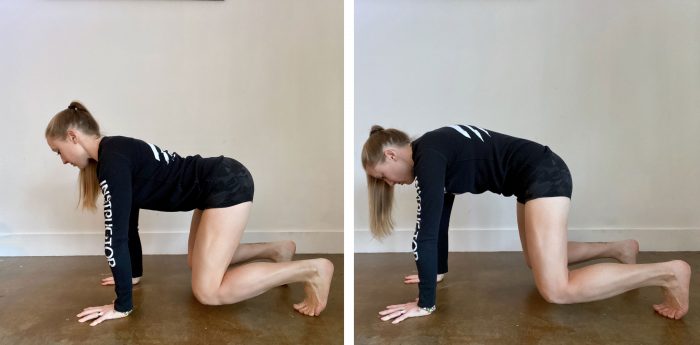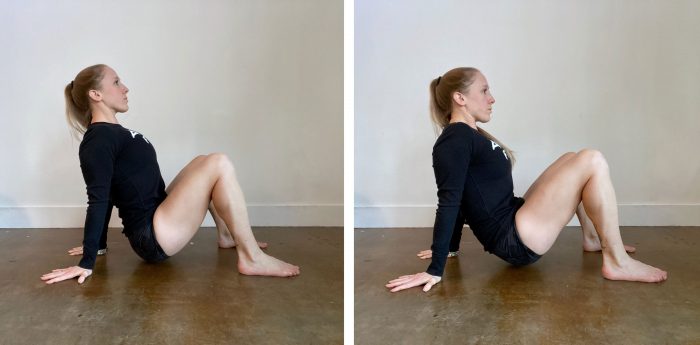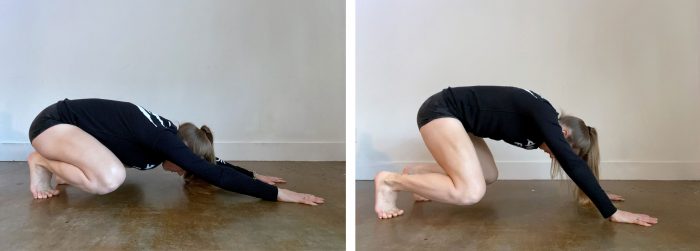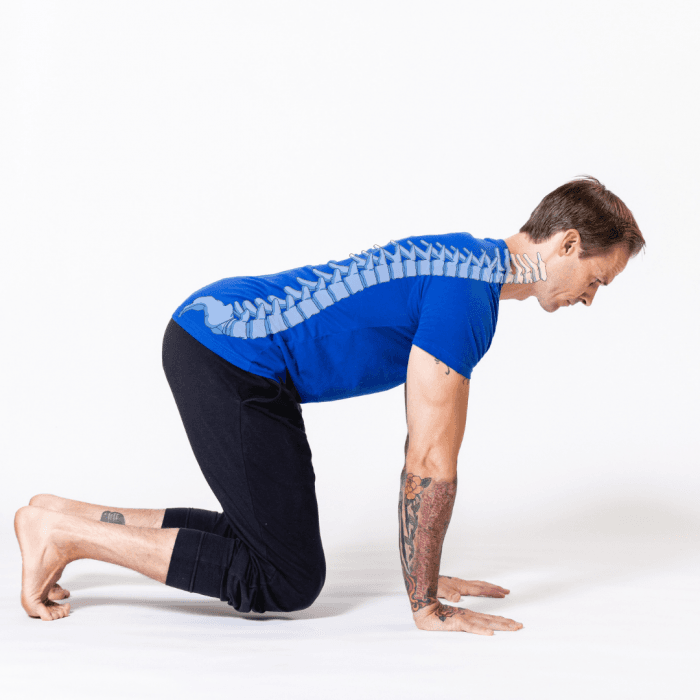
Adapting to Low Back Pain (Part 1)
Low Back Pain (LBP) is increasingly common in our society in adolescents and adults alike. When left unresolved, it is associated with reduced tolerance for activities of daily living and a lower quality of life.
Although it was once thought that rest was pivotal to recovery, the opposite is in fact true: reductions in physical activity lead to negative consequences physically, mentally, and socially. Thousands of studies have been done to try and resolve the puzzle that is chronic LBP and while there is no clear-cut singular approach, we do know that movement is one of our best defenses.
Your lower back is not alone
First and foremost, it is helpful to understand that your lumbar spine (lower back) is not in this alone; it can be thought of as an important meeting point of bony, neural, muscular, ligamentous, and fascial tissues in the body.
Terms to know
Neural: Relating to your nerves and nervous system.
Ligamentous: Relating to your ligaments. Ligaments are connective tissues that attach bone to bone.
Fascial: Relating to your fascia. Fascia is the term used to encompass many types of tissue (such as skin, cartilage, and tendons) that can respond to any type of mechanical stimulus such as pressure or load.
From a structural standpoint, the lumbar spine is made up of 5 bones called vertebrae that are labelled as L1 through L5 from top to bottom. When viewed from the side, they form a “lordotic” (or inward) curve.
This section of your spine interacts directly with your thoracic (middle and upper back) and cervical (neck) spines above it, and your sacrum and pelvis below.
Your lumbar also interacts indirectly with your limbs via muscular and fascial connections. Keep in mind that this is without also considering the complexity of connections that are occurring via your nervous system!
Simply put, lumbar spine motion, or a lack thereof, can carry impact everywhere else within the body and vice versa due to the integrated interactions of all its parts.
“When we try to pick out anything by itself, we find it hitched to everything else in the Universe.” – John Muir
From a movement and loading standpoint, your lumbar spine serves to:
- bear load in upright postures
- flex (bend forward)
- extend (stand up, bend backwards); and
- provide a bit of rotation (twisting).
Ideally, it accomplishes all of these motions in coordination with the rest of your body’s joints. However, if you have LBP, these synchronous relationships are frequently compromised.
Animal Flow is particularly beneficial for restoring a sense of safety, communication and connection within your body. This can help you move beyond back pain by addressing joint range of motion, movement variability, and endurance.
Adaptations to Back Pain
Those who experience LBP are as diverse as our human population. In scientific terms this is considered a “heterogenous” group, meaning no one is exactly the same. This is perhaps one of the many reasons that finding a solution to LBP requires operating on principles of bodily health instead of a one-size-fits-all approach.
Your body is an adaptation machine–for better or worse–and as different as people are, there are some common patterns that occur as adaptation strategies to LBP. Often, these adaptations are advantageous when the pain is sudden (known as ‘acute’ pain), but they can stick around beyond the point at which they were useful. As such, they’re important to look for and address in our movement practice.
Breathing
Breathing can help you stabilize your spine so it may seem counterintuitive that someone with LBP will alter their breathing to adopt a shallow “chest and neck” breathing pattern. This is an acute strategy to try and reduce rib and abdominal motion but can be problematic if adopted long-term.
As noted in an article on breath by Animal Flow creator, Mike Fitch, breath can change the way we move and change the way we experience our current state.
The Check In: Can you breathe in such a way that your ribs and abdomen feel free to move and your shoulders feel relaxed? Can you repeat the effort in Beast or Crab?
Relaxation and tension
Many people with LBP will adopt a pattern of low-grade, long-term (or ‘chronic’) tension through their trunks and hips as a way to feel stable and protected. Visually, this tension or ‘guarding’ can appear as a somewhat flexed posture. As much as this may feel safer initially, it marks a loss in the ability to dynamically relax and create tension in accordance with movements and posture. This makes it easier to get hurt again.
The Check in: Are you holding tension throughout your hips and trunk as a protective mechanism? Do you default to a flexed pattern in Beast to feel more stable?

Ideal Beast alignment (left)with a long spine and knees in front of your hips. Unwanted flexion in Beast (right) is a common error for people with LBP.
Mobility
Chronic muscular guarding can contribute to a reduction in mobility at the spine and hips alike, though these restrictions can visibly extend further to the limbs as well. It can be a bit of a chicken and egg scenario: the initial injury could be, in part, due to lost mobility but the guarding response to pain can perpetuate this loss.
Your spine is a column that is built to provide you with a stable base–such as in Forward Traveling Beast or when carrying a bag on one side. It is also built to provide adequate range of motion (picture the Wave Unload or when you rotate to put a seatbelt on).
While everyone’s range of motion potential does differ, your spine is not intended to be a rigid structure. When you lose motion at a joint (or joints), you increase the demands on the neighboring joints. As a result, the goal is to restore motion such that every joint is pitching in, and your spine can comfortably go back to doing its job!
The Check In: Do you have freedom of movement at your spine, hips, and shoulders, in daily tasks such as putting on a shirt or lifting a leg up to put on a shoe? Do you have enough range of motion at the shoulder, hip, and spine to achieve a Crab or Loaded Beast position?

Ideal Crab alignment (left) looks for a long spine and open chest. Unwanted low back flexion or restriction through chest or shoulders (right) might be present if you experience LBP.

In Loaded Beast, mobility through shoulders, hips and spine allows for a long and low position (left). Altered mobility due to low back pain could result in unwanted ‘guarding’ and incorrect alignment (right).
Endurance
The majority of people with LBP tend to have fairly strong backs because they unknowingly accomplish much of their movement with their spines! Rather than strength, it is the endurance of the trunk musculature (all the muscles on your abdomen, back, and sides) including weak cervical flexors (weak neck flexors), that tends to be lower in people with LBP.
This altered endurance was also observed in Ko Young-Woo’s research on AF and Back Pain; the intervention group notably restored endurance and reduced pain throughout the 16 weeks of AF training.
The Check In: Can you hold Beast or Crab with maintained alignment and relative ease or comfort for 20-40 seconds?
The fear of physical activity
Last but not least, fear is an incredibly common side effect of LBP and fear avoidance behaviours (such as being afraid to bend down) can be quite limiting to daily life. Many people with LBP may have eliminated different movements out of fear based on their personal experience, but the long-term goal is to be able to safely return to a wide array of movements.
Enter, Animal Flow.
All of the adaptations to back pain listed above can be addressed and managed through the Animal Flow system with the proper progressions. One of the beauties of Animal Flow is that it feels inherently safe thanks to the multiple points of support with the ground.
In addition to this inherent safety through ground-contact, Animal Flow can be deconstructed to rebuild range of motion, endurance, and strength alike. This means that every movement can be made smaller in order to be made accessible.
Ready to see if Animal Flow can help your back pain? Discuss with your medical practitioner whether Animal Flow might be right for you and then try some of the movements for yourself with Animal Flow On Demand. Get started on your 14-day free trial and reduce pain and regain function from the comfort of your own home.


